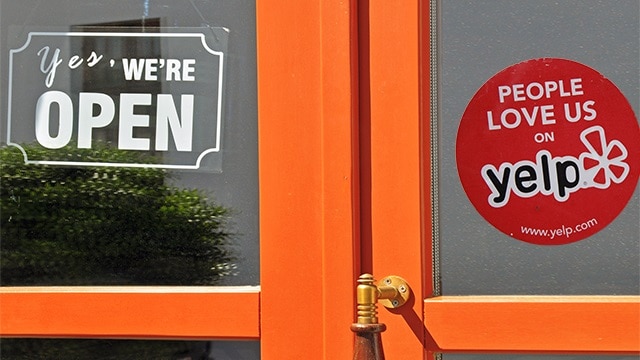Have Negative Yelp Reviews? Here’s How to Deal with Them.

Getting great online reviews can boost your business-owner confidence and, perhaps, bring new customers to your door. But what do you do when a negative Yelp review pops up? Start out by not worrying too much–this is fixable!–and then follow these guidelines to handle the unfavorable review.
Don’t Panic
One bad review (or even a few bad reviews) are not going to kill your business. Though online reviews are influential, (around 80% of consumers check reviews, and say that they trust them), not all customers are equally influenced by negative reviews.
Customers shopping primarily for the lowest price will be more affected by negative reviews, while customers who have some familiarity with the business tend to see negative reviews as exaggerated. Additionally, pure Internet-based businesses are far more likely to be negatively affected by an unpleasant review than brick-and-mortar businesses, which are insulated from such comments.
Examine the Source
First, determine whether the review is from a legitimate customer or from an underhanded competitor. The more local competition you have, the more likely it is that one of your competitors has taken to writing fake reviews to make you look bad.
Fortunately, you can take action against fake reviews from competitors: flag the review, then respond with a public comment that the review is from a competitor, not a customer. Be courteous and professional; you’re not interested in a debate, just in calmly showing that the review is illegitimate. At this point, you can contact your competitor and Yelp and ask both of them to take the review down. Yelp will want proof of the reviewer’s identity. Your competitor may agree to delete the review if you point out that no one will believe it now that you’ve identified it as false.
For legitimate customer reviews, investigate the situation that caused the negative review. The more you know, the better prepared you will be to respond appropriately. For example, if a customer is angry because a product was defective, offering to replace the product makes sense. If the anger is from poor service or unmet expectations, however, offering a refund might be better.
Respond Thoughtfully
There are two keys when responding to a bad online review: first, don’t ignore it and second, stay professional.
Ignoring a legitimate bad review simply makes potential customers wonder if you are willing to fix mistakes or if you will simply ignore unhappy customers. Make a public reply to the negative review, following this three-step format and staying tactful and courteous:
- Apologize. Even if the customer is over-reacting, start with a simple apology such as “I am so sorry you had a bad experience at our business.”
- Correct facts if needed. If the customer has misrepresented the situation, state what actually happened. Stick to the facts, and don’t accuse the customer of lying. You can include phrases such as, “I think you’re mistaken,” or “Perhaps you’ve forgotten.” Cite the source of your information.
- Ask for resolution. State your desire to recompense or otherwise resolve the situation and publicly ask the customer to contact you. You can say, “We want to make this right; please get in touch at [phone number] so we can fix our mistake.”
Be professional, friendly, and tactful. How you word your response will show future customers how you will respond if something goes wrong for them. A well-worded, thoughtful response can boost their confidence in your business, while an angry response can have the opposite effect.
Seek Resolution Privately
If you are able to contact the customer by email or phone, do so with the same professional, courteous manner in which you wrote your reply. Apologize, listen to the customer, calmly explain factual mistakes, if appropriate, and then seek resolution by asking what you can do to make the customer happy.
If you’re able to resolve the problem and win the customer back, follow up with another reply to the original negative review stating what steps you took and how the issue was resolved. The customer might also be willing to follow up on the original review with her own description of how you promptly and professionally handled the complaint.
Keep Getting Reviews
Proportions matter; a couple of negative reviews in a sea of positive ones matter less than one unpleasant review stacked against only one positive review. So keep sharing your review site information with customers; the more positive reviews you have, the more those few unpleasant ones will seem unimportant.
DISCLAIMER: This content is for informational purposes only. OnDeck and its affiliates do not provide financial, legal, tax or accounting advice.




